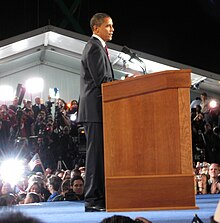
Back أمريكيون متعددو الأعراق Arabic Plurrasaj usonanoj EO Estadounidenses multirraciales Spanish Américains multiraciaux French Orang Multirasial Amerika ID Người Mỹ đa chủng tộc VI
| Total population | |
|---|---|
| Mixed-race (any race) | |
| Regions with significant populations | |
| Predominantly in the Southwestern United States and Florida | |
| 5,760,235[1] | |
| 5,133,738[1] | |
| 3,552,072[1] | |
| 1,767,463[1] | |
| 1,144,984[1] | |
| Related ethnic groups | |
| African Americans, Hispanic Americans, Métis Americans, Louisiana Creoles, Hapas, Melungeons | |
Multiracial Americans, also known as Mixed Americans, are Americans who have mixed ancestry of two or more races. The term may also include Americans of mixed-race ancestry who self-identify with just one group culturally and socially (cf. the one-drop rule). In the 2020 United States census, 33.8 million individuals or 10.2% of the population, self-identified as multiracial.[2] There is evidence that an accounting by genetic ancestry would produce a higher number.
The multiracial population is the fastest growing demographic group in the United States, increasing by 276% between 2010 and 2020.[3] This growth was driven largely by Hispanic or Latino Americans identifying as multiracial, with this group increasing from 3 million in 2010 to over 20 million in 2020, making up almost two thirds of the multiracial population.[4] Most multiracial Hispanics identified as white and "some other race" in combination, with this group increasing from 1.6 million to 24 million between 2010 and 2021, a trend has been attributed to changes in the Census Bureau's methodology on counting write-in ancestry responses, as well as growing racial diversity among the Hispanic population.[5]
The impact of historical racial systems, such as that created by admixture between white European colonists and Native Americans, has often led people to identify or be classified by only one ethnicity, generally that of the culture in which they were raised.[6] Prior to the mid-20th century, many people hid their multiracial heritage because of racial discrimination against minorities.[6] While many Americans may be considered multiracial, they often do not know it or do not identify so culturally, any more than they maintain all the differing traditions of a variety of national ancestries.[6]

After a lengthy period of formal racial segregation in the former Confederacy following the Reconstruction Era and bans on interracial marriage in various parts of the country, more people are openly forming interracial unions. In addition, social conditions have changed and many multiracial people do not believe it is socially advantageous to try to "pass" as white. Diverse immigration has brought more mixed race people into the United States, such as a significant population of Hispanics. Since the 1980s, the United States has had a growing multiracial identity movement (cf. Loving Day).[7] Because more Americans have insisted on being allowed to acknowledge their mixed racial origins, the 2000 census for the first time allowed residents to check more than one ethno-racial identity and thereby identify as multiracial. In 2008, Barack Obama, who is of Luo (Kenyan) and Scottish lineage, was elected as the first biracial President of the United States; he acknowledges both sides of his family and identifies as African-American.[8]
Today, multiracial individuals are found in every corner of the country. Multiracial groups in the United States include many African Americans, Hispanic Americans, Métis Americans, Louisiana Creoles, Hapas, Melungeons and several other communities found primarily in the Eastern US. Many Native Americans are multiracial in ancestry while identifying fully as members of federally recognized tribes.
- ^ a b c d e f "Race and Ethnicity in the United States". United States Census Bureau. August 12, 2021. Retrieved August 17, 2021.
- ^ "2020 Census Illuminates Racial and Ethnic Composition of the Country". United States census. Retrieved 2021-08-13.
- ^ "Over Half a Million People Self-Identified as Brazilian in 2020 Census". Census.gov. Retrieved 2024-07-09.
- ^ Tavernise, Sabrina; Mzezewa, Tariro; Heyward, Giulia (2021-08-13). "Behind the Surprising Jump in Multiracial Americans, Several Theories". The New York Times. ISSN 0362-4331. Retrieved 2024-07-09.
- ^ Passel, Mark Hugo Lopez, Jens Manuel Krogstad and Jeffrey S. (2023-09-05). "Who is Hispanic?". Pew Research Center. Retrieved 2024-07-09.
{{cite web}}: CS1 maint: multiple names: authors list (link) - ^ a b c Gates, Jr., Henry Louis (2010). Faces of America: How 12 Extraordinary Americans Reclaimed Their Pasts. New York University Press.
- ^ Root, Multiracial Experience, pp. xv–xviii
- ^ "Obama raises profile of mixed-race Americans", San Francisco Chronicle July 21, 2008.